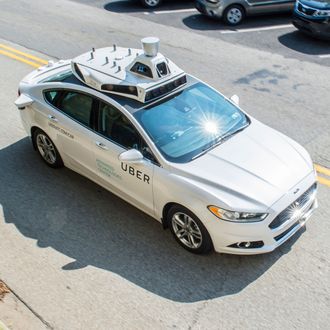
While Uber continues to test its driving cars — sometimes without permission from the government, and in the midst of a legal battle over technology allegedly stolen from Google, and a backlash from customers and drivers — the tech still doesn’t seem ready for prime time. According to internal numbers obtained by Recode, the driverless vehicles being tested in places like Pittsburgh and Phoenix still regularly require some sort of driver intervention.
While ferrying passengers around the city, Uber’s autonomous cars still have humans in the driver’s seat, ready to take over if necessary. According to the materials, these incidents fall into two categories, “critical” and “bad experiences.” The former classification is for actions taken to avoid injury to people or damage to property. The “bad experience” moniker is for uncomfortable things like slamming on the brakes.
Uber’s records show that over the six weeks beginning February 1, Uber’s fleet of 43 cars would make it an average of less than a mile before requiring some sort of driver action. Only on the week of February 8 did the cars manage to make it a full mile on average.
Critical interventions are generally rare. Last week, the cars went an average of 200 miles before drivers had to take over, although that average was only 114 miles a year before.
It’s tough to glean any strong long-term trends from this data, especially in week-to-week increments where uncontrollable variables such as weather and other drivers can alter conditions and results substantially. What the frequency of intervention does suggest, broadly, is that driverless tech isn’t quite there yet. This shouldn’t surprise anyone, but does push back on the industry’s general narrative that the true roadblock here is legislative (i.e., government regulation), rather than technological.
Having to grab the wheel every once in a mile might not sound so bad, but some automakers contend that semi-assisted driving tech, rather than fully autonomous systems, actually prove a greater danger — requiring drivers that are inclined to pay less attention when aided by automation. And, of course, Uber isn’t making these cars to help drivers. It’s making these cars to supplant them.





























